 Travel within Italy
Travel within Italy
For travel between cities and towns use the train. Trenitalia, the national train system, offers frequent and extensive service. Buying your tickets for intercity well in advance will save you money. Using the train for traveling in Italy is easy and convenient.
Some routes are serviced by the high-speed train which makes fewer stops and is very convenient for longer distances.
In addition to intercity travel, the bus and train system is quite extensive and useful for day trips outside major cities. It is not necessary to rent a car, and in fact probably more convenient and cheaper, to use the train if your itinerary consists primarily of cities and towns.
For instance you can take the train from Milan to Bologna, stopping or day tripping to the towns Parma, Emilia-Romagna, Modena. Many towns have areas where you cannot drive and the larger cities and towns rely on paid parking which can be expensive or restrictive to park all day.
For car travel when traveling in Italy, the Autostrada, Italy’s highway system is a series of toll roads and sometimes the tolls are quite expensive. For instance for a day trip Milan to Turin, traveling on the Autostrada for the 1.5 hours drive is over 16 euros in tolls. And that’s one way. You will also have to pay to Park in Turin and perhaps even pay to park at your accommodation or park some distance and walk.
Rome2Rio is the site I use most often to check transportation options between two places. Just enter in the two locations and Rome2Rio will present all the options, costs and time to travel between the two points. It also links through to various sites for purchasing tickets. It is very useful and can save you hours trying to work out options.
More information about the train service including schedules and tickets can also be found directly on the Trenitalia site.
Bus service is generally good as many people rely on the bus and train as their primary mode of transport. Making transfers may be slow and you will need to work out timetables, but if in cities and towns you can get by without a car.
If you want to head out to rural destinations, or are a larger group, another, and perhaps easier, option is to rent a car. We have been to Italy twice, first time we did not rent a car, second time we did as we wanted to hike and visit some of the wineries and small regional food producers.
Car Rental for Traveling in Italy
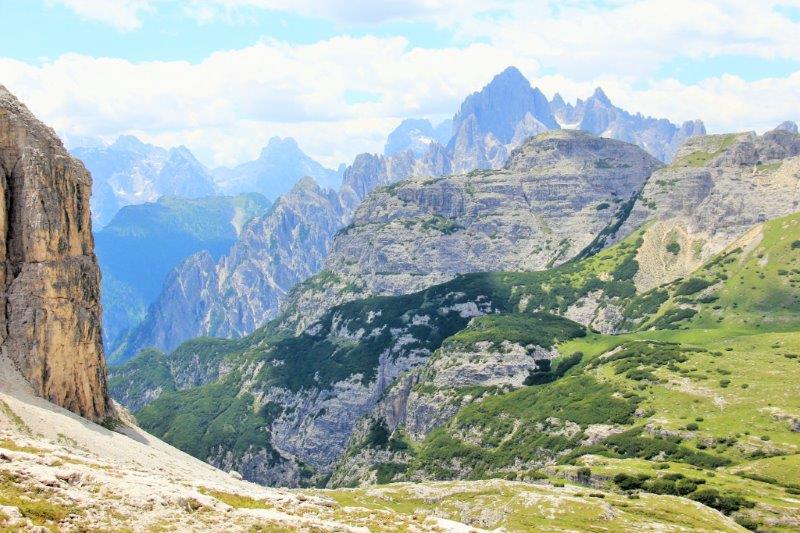 For car rental I typically use Kayak.com to search. It is a search engine for travel sites and will display all the options it finds. (Rome2Rio also has the ability to book a rental car.) This will then take you off to another site to book. Many times we use Holiday Autos to book. I like it because there are no hidden fees. What do I mean by that? Using one of the large international chains, i.e. Hertz, Avis, etc. because you book on the international site, the fine print will say there can be local charges applied not covered/quoted here. Often times this results in the rental costing twice as much as the quoted price, so be aware and check the fine print on ANY car rental booking to see what is included.
For car rental I typically use Kayak.com to search. It is a search engine for travel sites and will display all the options it finds. (Rome2Rio also has the ability to book a rental car.) This will then take you off to another site to book. Many times we use Holiday Autos to book. I like it because there are no hidden fees. What do I mean by that? Using one of the large international chains, i.e. Hertz, Avis, etc. because you book on the international site, the fine print will say there can be local charges applied not covered/quoted here. Often times this results in the rental costing twice as much as the quoted price, so be aware and check the fine print on ANY car rental booking to see what is included.
Typical extra charges include additional drivers, GPS systems, tolls, insurance and additional fees if driving across international borders.
And that brings us to crossing international borders with a car. Many times the rental will not allow it, or will charge you quite bit of money if they do. In Europe given you are probably still within the European Union you might think this is permitted. Sometimes it is, sometimes it’s not, depends on the rental car company, the countries involved and the time period. Read the fine print. For a complete guide on avoiding surprise fees when renting a car read this post BEFORE you do anything.
Car Leasing in Europe for Overseas Visitors
If your itinerary involves multiple European countries, leasing a car may be a better option than renting a car in Europe. This is a fantastic option if your itinerary is 17 days or longer (17 days is usually the minimum lease period). The longer the lease, the lower the daily rate, making it often more affordable than a rental car for the same period.
Auto leasing for tourists in Europe is available to non-residents of Europe. They must be arranged and usually paid for in advance. It gives you a brand new, fully insured car ($0 deductible) to use for the duration of your trip. The car is registered in your name and you are given the registration and the insurance documentation. Additional drivers are allowed and included in the cost. Typically the area you can take the car is most of the European Union, but check the country list to ensure where you want to go is permitted.
Renault, Peugeot, Citroen and to a lesser extent Volkswagon all offer a non-European resident lease program. Pick-up and drop-off within France is usually free, charges apply for other cities You can pick-up and drop-off in all cities and/or all countries (there is a list). Booking early can provide discounts, free days and reduced pick-up drop-off fees. It also can provide a greater selection of cars.
If you think this seems to good to be true, the benefit to the manufacturer is after a car has been leased through this program it can be sold as “used” which reduces the taxes, similar to selling demonstrator cars in other countries.
One last item is diesel or gasoline (petrol) for fuel. Diesel cars in Europe are very fuel efficient and diesel petrol is cheaper, at the time of writing about .20 euro cents cheaper per liter, or about 1 euro per US gallon. While this may sound like a lot, it is a difference of about 8 euros more at the pump for gasoline. Diesel cars are more expensive to lease or rent, so depending on how much driving you plan on doing, you will need to calculate which is more economical for your trip, diesel or gasoline.
Read our longer post on short term leasing in Europe for full details and links to programs for quotes.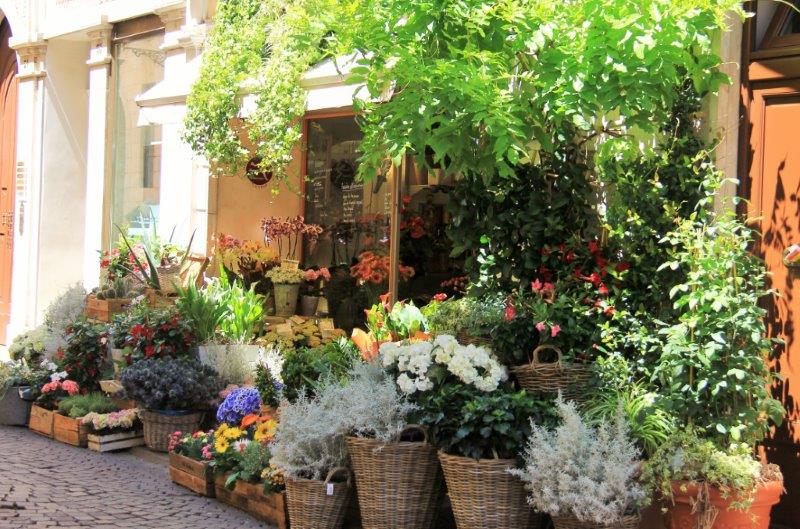
Summer Opera in Italy
June and July sees many towns offer outdoor opera programs. These are usually in the ancient Roman amphitheaters. It can be a truly memorable and spectacular experience to watch an opera in one of these venues. Use a search engine and search “summer opera in ____”. Buy your tickets direct from the ticket office online in advance. Many of these programs and shows are very popular and sell out. Buying them direct from the box office, rather than a third can save a lot of money. Third parties often add fees on each ticket, resulting in you paying €10 (euro) or more per ticket.
Some indoor opera venues also have Summer programs and they are worth checking as Italy has some fantastic indoor opera venues.
There many other theater, musical and tour programs with events offered only in the summer. One example is night-time tours of the Colosseum in Rome. A good site to check is Timeout for the city or town you are visiting. Remember Italy is a very popular tourist destination and planning ahead is advised when traveling in Italy, especially during the summer.
Opening Hours
Opening hours in Italy vary greatly and in many cases are quite limited. Always check the opening hours in advance. Assume no matter what it is that you need to make a booking in advance, you might find you don’t but if you arrive without one you may be disappointed. If you are traveling a great distance or need to do something on a particular day, call in advance and confirm. Many times we have arrived to find something which despite the “Aperto” (open) sign being displayed, and the hours indicating this is a time the business should be open, it is closed. Opening hours are a guide, not an indication someone will be there. If there are no bookings, the business may just shut for the day.
Also, while not called a siesta in Italy (siestas are in Spain) most of Italy seems to have the same practice. The shops have limited hours and are usually closed in the middle of the day, on Sundays and one afternoon a week. When open, typical operating hours are 10-12, 3-7. This often includes museums and tourist activities as well. Restaurants are typically open when shops are not, from 12-2:30 or so, and then again starting around 7 pm for dinner. “Bars” serve both alcoholic and non-alcoholic drinks. Establishments opening around 5 pm for aperitivos usually serve antipasti and light snacks until dinner begins.
Italians eat after about 8 pm, later in the summer when it is often very warm (many places are not air conditioned) after the heat of the day has disappeared. If this is late for you to eat dinner, consider making lunch your main meal and have a lighter meal at dinner. If not, when in Rome . . .
 Advance Bookings
Advance Bookings
As mentioned above, you need to book things in advance in Italy to avoid disappointment. This includes dinner reservations as well as tours and museums. For many of the most popular attractions this is essential. Traveling all the way to Florence and missing the Uffuzi Museum because you didn’t make a reservation would be very upsetting.
In addition for some attractions the only way to really get a ticket is to pay 10 times more than the ticket costs and take a tour. All of the tickets have been sold to tour operators. This was true for the Last Supper in Milan. The only way to get a ticket for over three months of summer was to go on a tour. The ticket if it was available was €11, the tour was €85. If you want to see it, a tour may be your only option. If traveling in Italy at peak times or high season it is essential to plan ahead.
Many places cater only to group tours and you may find it difficult to organize a visit if you are traveling independently. If there is somewhere you really want to visit, you may need to alter your itinerary or again pay to go on a tour. We were shocked to find the series of food museums in the Emilia Romagna region closed to individual tourists Monday through Friday. M-F you could only visit on a tour, individuals could only visit 10-12, 3-7 on the weekends. So check in advance.
Internet Access while Traveling in Italy
Internet coverage and speeds are poor in Italy. Even getting a local SIM card with data access may not help. Italy wins the Compass & Fork Worst Internet Award by a wide margin. We have traveled to some very remote places and had better coverage and speed than we had traveling in Italy.
Tipping
Tipping is NOT required, and it is preferred you do not tip. You will notice at a restaurant if you pay by credit card there is no line on the slip for tipping, Italians do not tip. Leaving the spare change from a purchase or rounding up is fine, but there is no need to leave 15-20% tips for a meal or other service. Workers wages are sufficient and tipping is not required.
Ordering Coffee when Traveling in Italy
Italians are not big breakfast eaters. Breakfast is usually a brioche or other pastry and a coffee. Italians drink coffee all day and an espresso is often the choice to finish a meal.
Standing at the counter for your coffee and/or pastry is cheaper than sitting down. So most Italians stand at the counter to drink their coffee, try joining them. For Americans, you can order coffee Americano, this is espresso with water added.
Compass & Fork Itinerary
For your traveling in Italy, this map shows the areas covered with the Northern Italian posts on the site.
Other Italy Related Posts: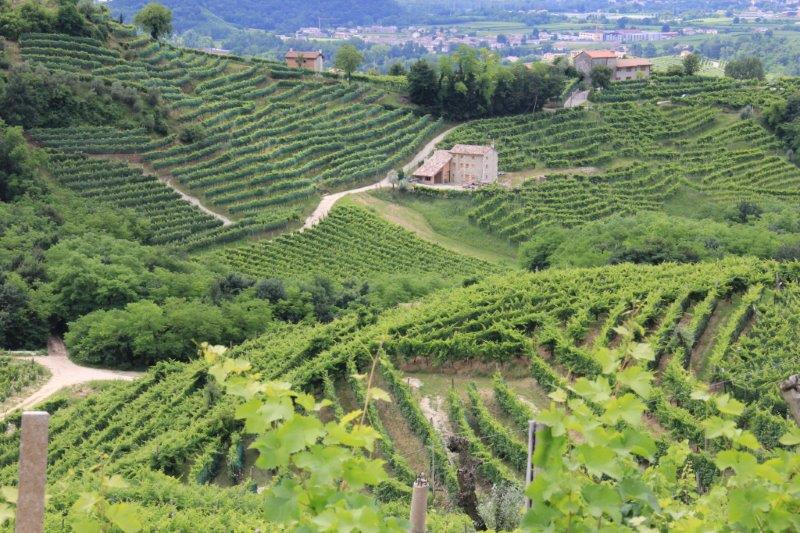
Expo Milano 2015
Milan EXPO & Venice Bienniale: 2015 the Year to Visit Italy
Penne Puttanesca in Celebration of the Milan Expo
Bologna and the Emilia Romagna Region
The Emilia Romagna Region in Northern Italy: Home to Great Food
Traditional Balsamic Vinegar of Modena: more expensive than fine wine?
Parmigiano Reggiano Cheese: the Whole Delicious Story
Baked Stuffed Zucchini Flowers or Squash Blossoms
Tortellini with Sage and Butter Sauce
Modena Market Porcini Mushroom Risotto with Truffle Oil
Veneto, including Venice
Herb Crumbed Fish Recipe inspired by the Venice Fish Market
Italian Wine, Grappa and Tiramisu: Unwinding in Veneto (Including a Recipe for Tiramisu)
And if you’d like to put it all together, here is a great menu for an Italian Dinner Party!
If you have any questions or suggestions for your fellow travelers for traveling in Italy, please leave a comment.

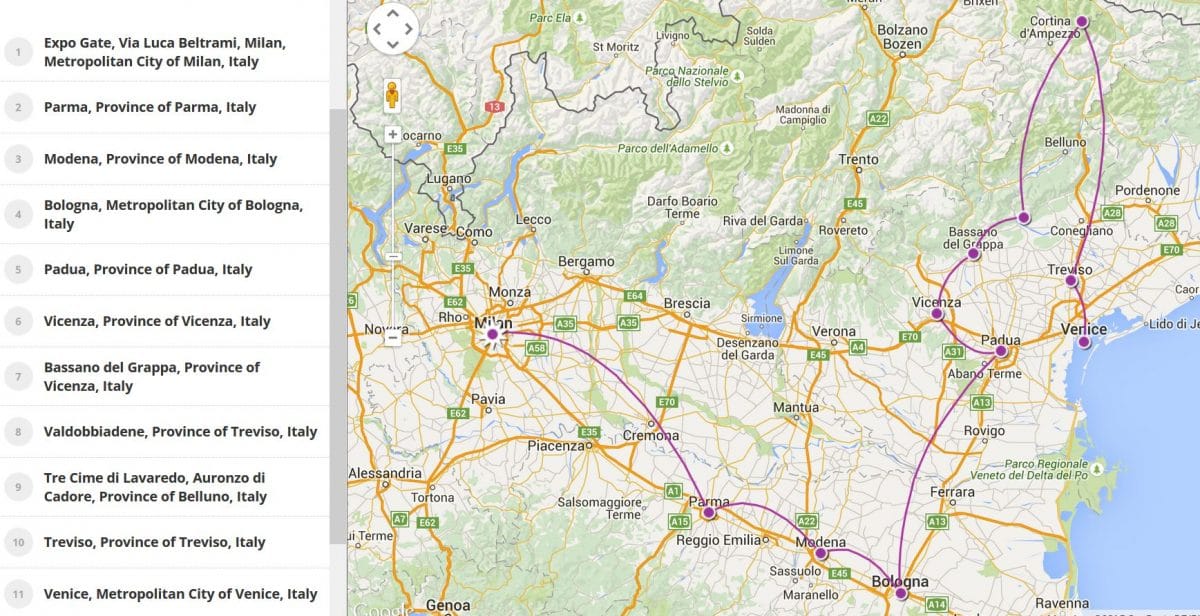
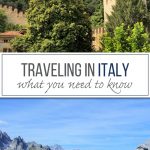
Laurie
I will definitely be saving this post–my retirement trip (2 years!) will be to Italy 🙂 Thanks for all the good info.
Editor
Laurie. Thank you for your comments. Italy is definitely a place to visit. You will love the food! Cheers….Mark
Bam's Kitchen
These are great helpful hints! We have traveled to Italy a few times now it sure would have been nice to read your post before we went. The other thing that I was not expecting is that essentially there were no restaurants opened after 3pm and before dinner so if you arrive hungry from the plane or train you might be that way for some time…as everything closes mid day… well at least in the smaller cities we were in. Love your website!
Editor
Thanks for your kind comments Bobbi Ann. Flexibility is not a thing in Italy. It may also be wage rates that dictate the opening hours but it certainly doesn’t help the hungry traveler. Cheers….Mark
Charlene @ That Girl Cooks Healthy
It’s good to know that Italians do not heavily rely on tips to constitute their income. While I don’t mind tipping providing the overall customer service is satisfactory, it really annoys me when I visit the states how they expect you to do it regardless of the service.
Editor
Hi Charlene. Yes I like having the option to tip if I believe the service has been good. Thanks for the comment.